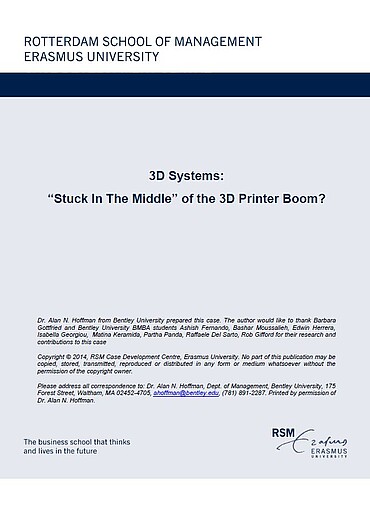Citation Note
Based on published sources; 11 pages.
Follow the 'handle' link to access the Case Study on RePub.
For EUR staff members: the Teaching Note is available on request, you can contact us at rsm.nl/cdc/contact/
For external users: follow the link to purchase the Case Study and the Teaching Note.
Abstract
3D Systems, the pioneer of 3D printing, predicted a future where "kids from 8 to 80" could design and print their ideas at home. By 2013, 9 years after the creation of the first working 3D printer, there were more than 30 major 3D printing companies competing for market share. 3DS and its main competitor, the Israeli company Stratasys, held a combined market share of 37% split almost evenly and marketed products in all the same areas. However, a greater threat came from large multi-business firms such as HP, which publicly stated their intention to enter the 3D printing market. HP had the potential to leverage strong brand recognition and a vast distribution network to quickly penetrate the home consumer 3D printing market. Moreover, HP’s rich resources would enable it to develop strong R&D capability and a powerful marketing presence. It could then offer lower priced 3D printers for the home consumer market, potentially disrupting that market, then move on to focus on service and materials to drive profits.
